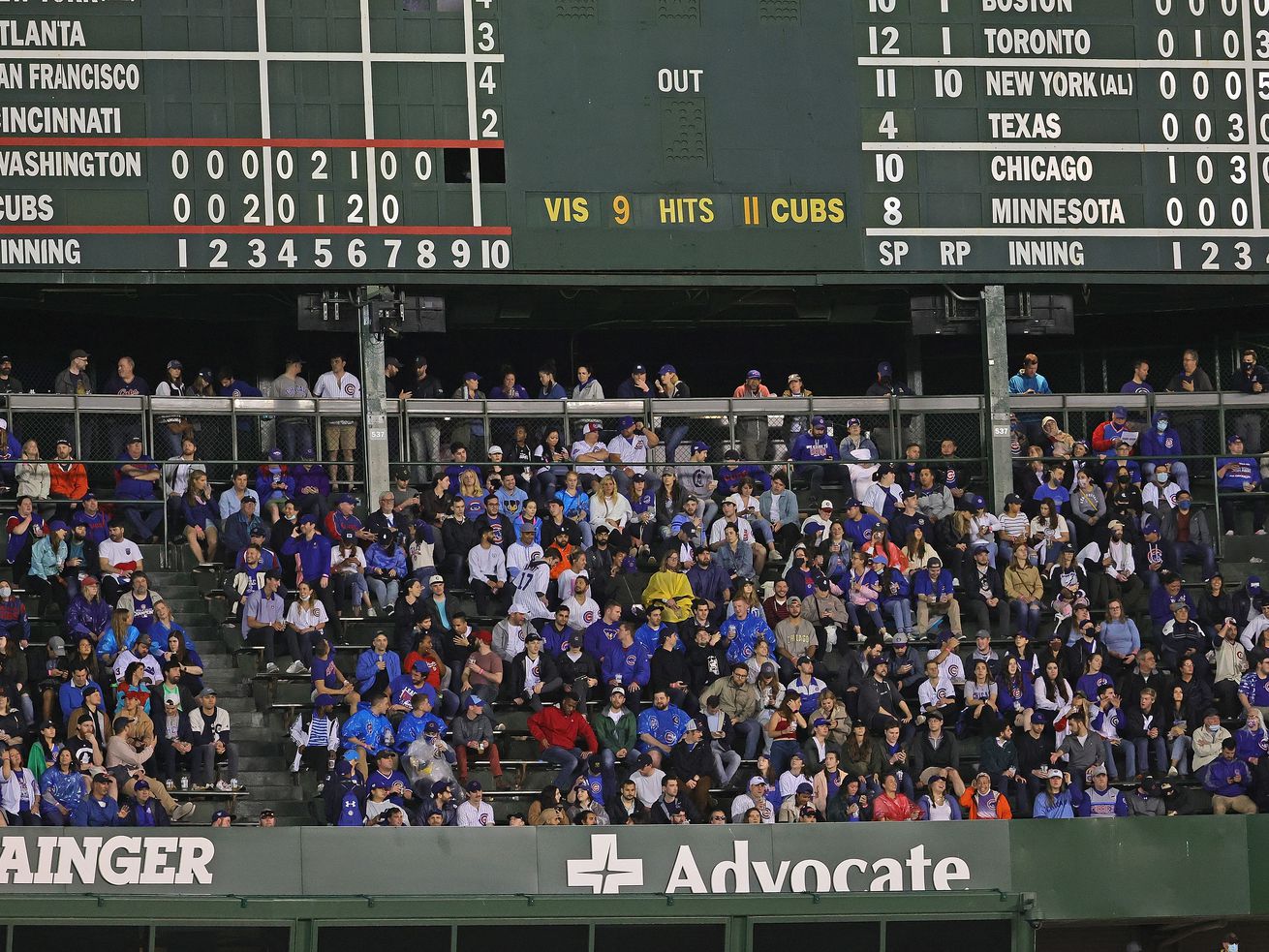
After thinking I’d grow accustomed to the incongruity of a competitive ballgame missing the surrounding, telltale signs of a competitive ballgame, I realize now I never did.
Last year, I said something stupid.
OK, yesterday, I said something stupid. But for the purpose of this column, I’m referring to what I wrote when baseball returned last July with cardboard cutouts and fake crowd noise to help TV broadcasts replicate fans in ballparks emptied by the pandemic.
“So this is what pandemic baseball looks like on TV,” I wrote. “I’ll take it.”
Idiot.
In my defense, it beat the alternative of no baseball, and I wrote as much. But after thinking I’d grow accustomed to the incongruity of a competitive ballgame missing the surrounding, telltale signs of a competitive ballgame, I realize now I never did.
There’s a lot to be thankful for as pandemic restrictions begin to ease. Near the top of my list is having more fans back in the stands. Guaranteed Rate Field increased capacity from 25% to 60% on Monday, and the difference on the broadcast was palpable. Wrigley Field will follow suit Friday.
Last season, almost every camera shot was a reminder of the ballpark’s emptiness. There was no way to hide it, and it grew tiresome. The networks knew it, too.
“You don’t realize how much you miss the fan engagement,” said Kevin Cross, NBC Sports Chicago senior vice president and general manager. “The fans bring natural sound, which is important, but it’s not the most important. Most important, they bring engagement.
“The fans in the stands are a different voice on the broadcast that you can’t replicate artificially. When something is happening at the ballpark, the reaction is authentic, and you get a sense of what’s going on at the game. Real-time engagement is great for the viewer.”
That missing piece of the broadcast surely had an effect on viewership, which reached record lows for major events last year. Granted, the compressed sports schedule and out-of-season events played a part. But the quality of the broadcast did, too, and it suffered without fans.
Sometimes those fans become the talk of the game. Remember the Cubs fan who balanced his hat on his head in the bleachers in 2019? Hat tip to Yogi, who was interviewed during the game.
We’re seeing fans catch foul balls again and throw home-run balls back, such as the little boy whose father carried him down to the front row of the Wrigley bleachers to toss back a Dodgers homer this month.
It wasn’t easy for broadcasters to keep up their energy last year without a crowd to rouse them. They did the best they could trying to make broadcasts sound normal. But they could only do so much to build up a key moment without fans to raise the decibel meter.
“I think the [crowd’s] energy translates through our announcing teams,” said Mike McCarthy, Marquee Sports Network general manager. “Some of those games last year, it was so heartbreaking at times to hear the sound of the ball clanging off the empty seats. I hope we never hear it again.”
McCarthy, in particular, is thrilled to have fans back at Wrigley. From the network’s launch last year, its plan was to make the ballpark a co-star of broadcasts, treating it like Augusta National during the Masters. With a live audience on hand, the network is excited to expand its cast.
Marquee brass includes disciples of late Sports Broadcasting Hall of Famer Bill Webb, who directed baseball games for Fox and SNY, the Mets’ network. McCarthy and senior vice president of programming and production Mike Santini worked with Webb for years, and director Mike Fox was a mentee of his.
“He turned [directing] into an art form, to lock in on a couple of fans that are just anxiety-laced and seeing the games through their eyes,” McCarthy said. “We certainly try to bring that, but then we have this added benefit of the experience at Wrigley, which is unlike any other. We have conversations all the time about trying to bring that into the broadcast.”
The next step is to put announcers back in ballparks for road games. As happy as they are to hear a crowd through their headset while calling a game remotely, they need to be on site to call the best game possible. Sometimes it’s evident when broadcasters’ view of the game is limited to what the cameras are showing them, and they only feel the full effect of fans when they’re sitting among them.
“We can’t wait to get normalized again,” McCarthy said. “Our guys are doing a fantastic job in a limited set of circumstances, but it’ll be great to get them out on the road. Until then, we have this challenge in front of us, but it only makes us salivate more for the home games.”
Remote patrol
- NBC will carry its third – and perhaps final – Indianapolis 500 at 10 a.m. Sunday. The network’s deal with IndyCar is in its final season, and Roger Penske reportedly will take his racing series to a higher bidder. NBC’s top IndyCar team of announcer Leigh Diffey and analysts Townsend Bell and Paul Tracy will call the race. Mike Tirico will host the studio show with Danica Patrick, and IndyCar rookie and seven-time NASCAR champion Jimmie Johnson will serve as an analyst.
- The Cubs will return to ESPN’s “Sunday Night Baseball” on June 13 against the Cardinals at Wrigley Field. The teams’ meeting Sunday in St. Louis drew an average audience of 1,529,000 viewers, according to Nielsen. “SNB” is averaging 1,599,000 viewers this season, up 29% from the 2020 full-season average – even with Alex Rodriguez on the call.
